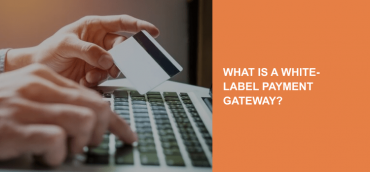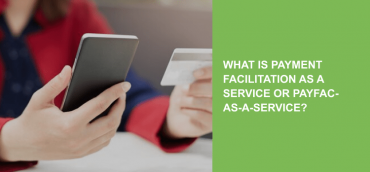All over the world, there is a gradual reduction in the use of cash with the transition to online payment systems. Electronic currency is gaining popularity and is becoming an effective tool in the financial infrastructure of economic leaders. According to statistics, the number of digital buyers is increasing constantly.
Every year, the number of countries that reduce the turnover of the cash supply increases too. It is also a consequence of the global digitization of payments, including in particular the development, implementation of electronic payment systems, and settlements using bank plastic cards.
Payment gateways have always been at the heart of e-commerce, allowing users to make payments online with no fuss. The technology has come a long way since its inception, and now it can be integrated with multiple platforms, allowing customers to seamlessly use the payment services and cards they prefer for online payments.
What is a payment gateway?
A payment gateway is software that allows merchants to accept credit and debit card payments at online stores and physical payment points.
Even before you learn how to create your own payment gateway, you need to understand in detail how the transaction flows:
- The client makes a purchase in an online store and is redirected to the payment gateway page to fill in his credit card information;
- All data is encrypted and forwarded to the server of the payment gateway;
- The payment gateway receives data, processes it, and then addresses information about the transaction to the issuing bank;
- The bank contacts the payment system where the correlation between the terms of purchase and the client’s payment capacity is checked;
- The issuing bank sends the verification code used to verify the credit card and approve it when buying or selling to the payment system to complete the transaction;
- The payment system sends a response to the payment gateway with information whether the transaction was approved or not, and then transmits the response to the merchant;
- After the successful completion of the transaction, funds are withdrawn from the client’s account and transferred to the merchant’s account.
Criteria that payment gateways must meet:
- Data security.
Naturally, reliability and invulnerability are the main factors that are incredibly important to every client. None of the credit cardholders are willing to share confidential information with a provider that does not offer strong security. Therefore, when choosing or developing your own payment gateway, reliability of the security system should be a priority. - Working hours.
Many entrepreneurs provide their services not only to the local customers but to those from all over the world. A 24-hour technical support department is another key factor when creating a payment service from scratch. - Fraud detection systems.
This software implies a multi-level transaction monitoring protocol and their analysis for suspicious activity. - Available payment methods.
Global coverage imposes certain requirements on the development of a payment gateway. Preferred payment solutions must be provided for each supported country.
A white-label payment gateway or a self-developed one?
“White-label” implies a partnership in which one company releases a product and another sells it under its own brand. This format enables the mass production of consumer goods. The main advantage is that the product enters the market under different brands and at different prices.
A White Label Payment Aggregator is your personal electronic payment system that combines payment processing and internal customer accounts under your brand. This solution will allow you to independently establish the rules for money transfers within the service, choose the most promising external channels for crediting and payments, easily track transactions, and generate reports.
Benefits of using a white-label payment gateway:
- Speed. Developing a payment gateway from scratch can take several years of painstaking work. Besides, it will be necessary to pass an audit and obtain the appropriate licenses. When choosing a white-label solution, you will receive all the key tools much faster.
- Cost. Of course, the development of any software requires significant costs, so in many cases, a white-label payment gateway will be more cost-effective.
- Integration. It’s easy to integrate a white-label payment solution. The development company will provide all the necessary settings and train employees.
- Customer focus. Many would agree that it is better to spend time building business relationships with partners than wasting it on troubleshooting the system.
Building a payment gateway from scratch can be a huge investment, both financial and technological. Also, implementation can take years. However, with white-label services, the company only needs to have a license to provide these services and that’s it.
A self-developed payment gateway
A self-developed payment gateway. At times, it may seem that none of the proposed options suits your business requirements. Given the number of offers on the market, sometimes this is difficult to imagine, but it happens more often than you think. Developing a custom payment gateway is a challenging but rewarding task. Particularly for developers since the cost of developing a system that processes online payments is quite high.
Of course, such development has very good prospects. With a new online payment processing application, you can control and use technology in a way that best suits your business needs. Also, keep in mind that this way you don’t have to pay a processing fee. If your online store develops in the future, then this method will have many advantages.
How to create your own payment gateway with different programming languages
According to the latest researches, the most common programming languages in fintech are the following:
Python language
Today there are many programming languages, each of which has its own characteristics. But I would like to highlight Python as a popular universal programming environment with a long history.
Python has a wide range of uses. This programming language is appropriate not only for developing a payment gateway. It is used to create a wide variety of solutions. These are automation scripts, life support systems, games, all kinds of applications.
Python easily competes with other programming languages, as it has many advantages:
- Clarity and simplicity. It is especially good for beginners. You can create interesting applications without having to sit for weeks studying complex syntax.
- Versatility. Python is versatile thanks to its rich standard library, so it is used in a wide variety of areas.
- Python has strong coding requirements, which is an advantage because it helps programmers to write code in an organized and easy-readable manner.
PHP language
The rise in popularity of PHP and its frameworks in recent years has been significant, and this trend continues.
By itself or, more often in combination with other technologies, PHP is suitable for creating any type of IT projects: from simple websites to CRM solutions and large marketplaces.
The PHP language has a number of undeniable advantages:
- High speed of work and, accordingly, the overall performance of resources.
- Budget, efficiency. Finding a specialist is not a problem, the cost of writing programs in PHP is not high.
- Easy to learn, simple syntax.
- Excellent compatibility and portability – PHP codes work equally well with different platforms.
- You can type the code and edit it in any text or HTML editor.
- High flexibility, capacity, and functionality. A PHP program can be compiled separately from web page development, without binding, and then combined. It simplifies the work of designers and programmers.
- Multitasking and ample opportunities – creating any web applications, blogs, guest books, online stores, websites, working with redirects, headers, pdf documents, databases, e-mail, etc.
C language
The C programming language is a universal programming language that has gained particular popularity among programmers.
Most programmers prefer to use the C language for serious development because they are attracted by such features of the language as freedom of expression, portability and extreme accessibility.
- C is the world’s fastest high-level programming language.
- The C language is characterized by conciseness, a standard set of flow control constructs, data structures, and an extensive set of operations.
- C is appreciated for its effectiveness. It is the most popular language for building system software. It is also often used to create application programs. Although C was not designed for beginners, it is heavily used to teach programming. Later, the syntax of the C language became the basis for many other languages.
Obtaining a payment processing license
Now that you know how to create your own payment gateway, you need to understand how a PSP licence works. To obtain a PSP License, you must submit an application and a package of documents to the regulatory authorities of the selected state. For most EU countries, the licensee must meet the following minimum requirements:
- Company’s impeccable financial reputation;
- An impeccable reputation of the management team and founders;
- Limitation of monthly turnover, in accordance with the requirements of the regulator;
- The presence of an office in the country in which the application is submitted;
- The company’s activities must not violate the laws of the country in which the licensing is provided and the EU;
- One of the directors of the company must be a resident.
This list is a minimum set of requirements. Some regulators may have additional requirements for companies to obtain a payment service provider license.
The bottom line
If you have the time and investment, you can certainly start developing your own payment gateway. Otherwise, it is better to use a white-label payment gateway. For self-development, you will need to determine the programming language that will be used, take into account all the necessary requirements applicable to payment software, and develop integration documentation. After that, you can contact the acquiring bank, pass the accreditation process, and start providing online payment processing services.




